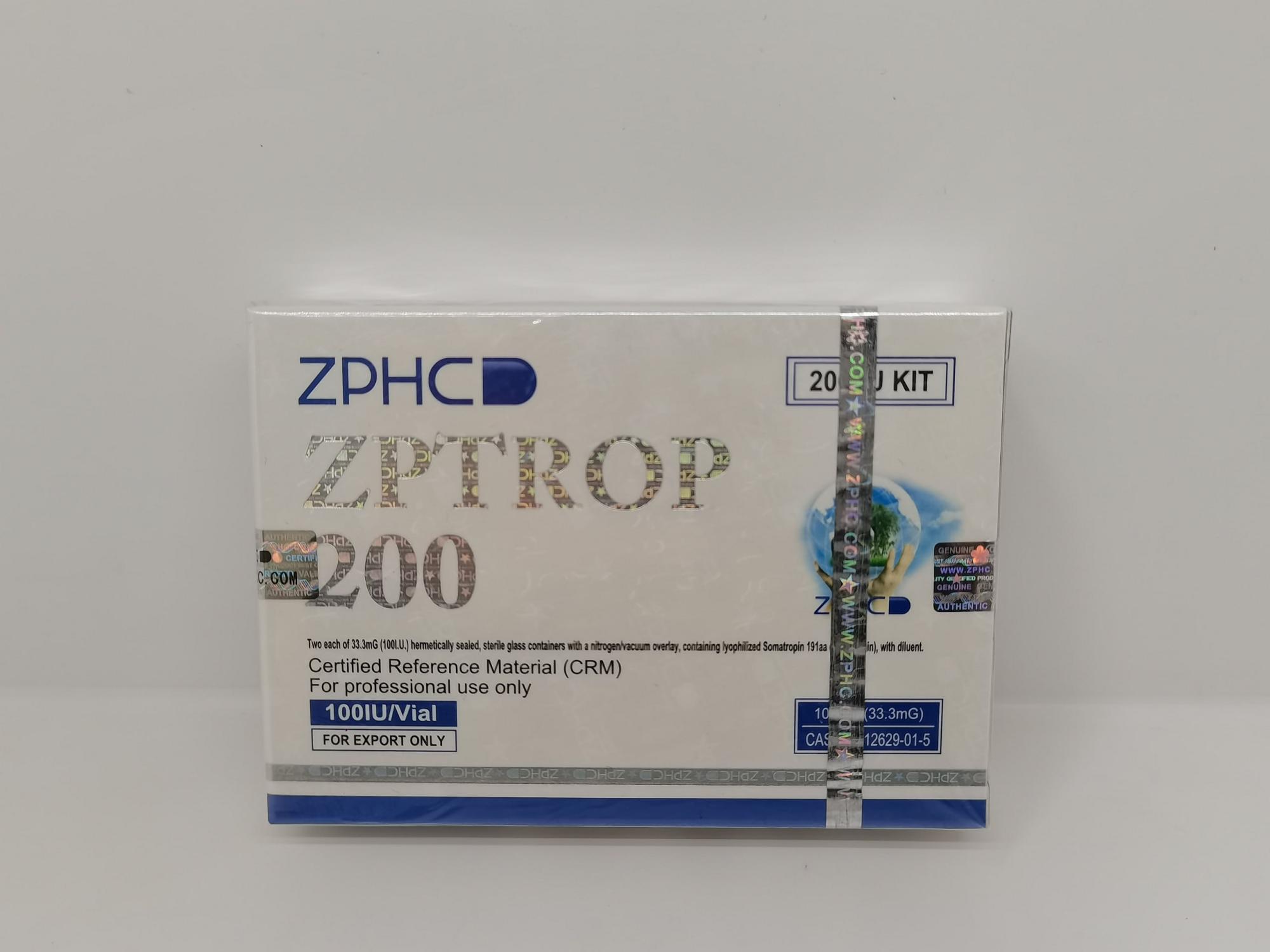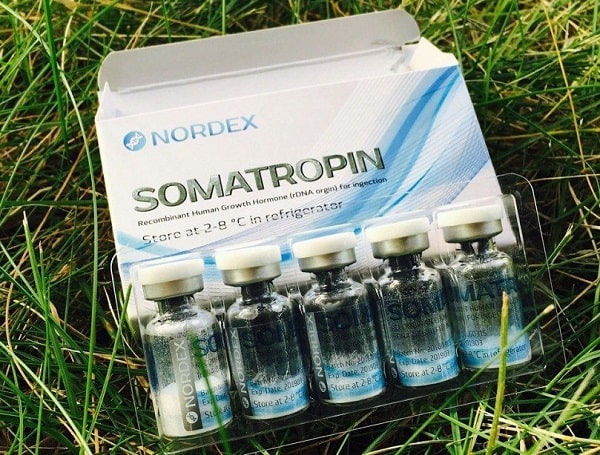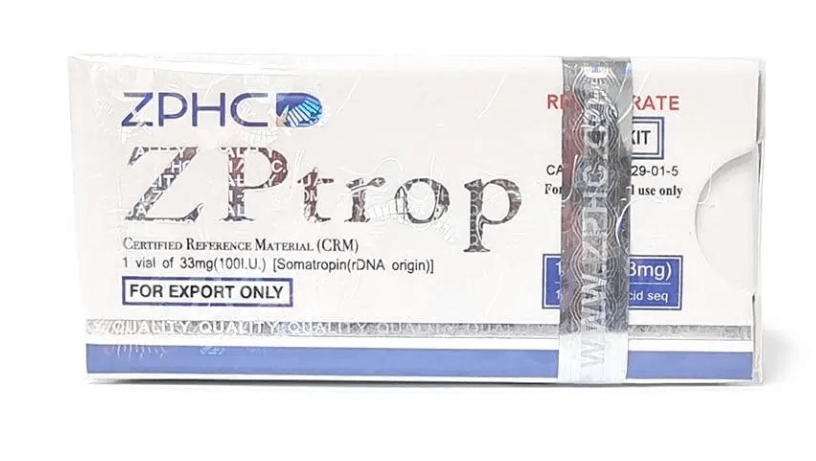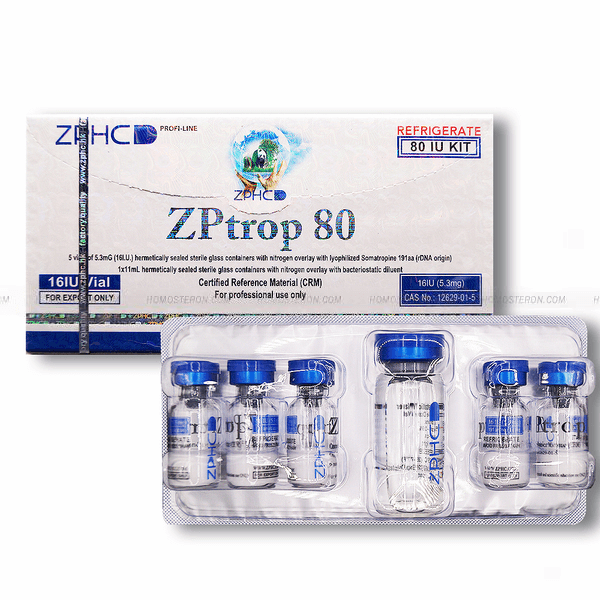Good day, athletes. Today we will not talk exactly about steroids. To be more precise, about the Growth Hormone. Perhaps everyone has already heard of it.
The article will be aimed at athletes and sportsmen looking for high-quality and effective information on how to take drugs correctly, and of course, suppliers of high-quality pharmacology, which we are! As for advice on use, technique of administration and dilution of the drug, as well as the course, these chapters will be in the second part, in continuation of this article. Enjoy reading :)
Terminology
Somatotropin (growth hormone) is not just a growth hormone, but a complex regulator of metabolic processes, opening new horizons in both medicine and agriculture. Its roles and mechanisms of action allow not only to optimize the growth of animals and plants, but also to develop new methods of treating various human diseases.
 ZPtrop HGH 200iu ZPHC
ZPtrop HGH 200iu ZPHC
The key function of somatotropin is to stimulate the growth of cells and tissues of the body. After birth, it is this hormone that provides weight gain and an increase in cell size, while active division of new cells occurs only in certain tissues, such as blood, skin and epithelium. This growth process is regulated by a complex interaction of hormones, in which somatotropin plays a central role.
Somatotropin, produced by the pituitary gland, is a product of the neuroendocrine system and literally translates as «body-creating.» Its antagonist is somatostatin, produced partly by the pituitary gland and pancreas, which slows down growth. Growth is activated by somatomedin, also known as insulin-like growth factor-1 (IGF-1)1. This hormonal orchestra, including somatotropin, somatostatin, and somatomedin, determines the speed of cell cycles and the intensity of metabolism.
Despite the complexity of studying, the interaction of these hormones is the subject of active research, especially in light of the commercial use of somatotropin in agriculture and the prospects for its use in medicine. In particular, bovine somatotropin (rBST or rBGH) is widely used to accelerate animal growth and increase milk yield.

For therapeutic purposes, synthesized somatotropin is used, and in rare cases, an extract from the pituitary gland of cows. A similar method of production is used to produce Cerebrolysin, an extract from the brain of pigs. It is worth noting that somatotropin is an anabolic drug, although it does not belong to steroid hormones. In sports, it is used to gain muscle mass, often in combination with insulin to compensate for the resulting imbalance in the body.
Age-Related Changes in Growth Hormone Secretion: Inevitable Decline
Growth hormone (somatotropin) secretion declines significantly with age, which is a natural process that affects health and physical fitness.
With age, both the baseline level of the hormone and the amplitude of its peaks decrease. In older people, growth hormone secretion reaches its minimum value due to changes in the pituitary gland.
Age-Related Features of GH Secretion:
- Early childhood - the maximum level of the hormone is reached, supporting growth.
- Adolescence - peak secretion during active growth and puberty.
- Old age - minimum levels and rare peaks of secretion, which leads to age-related changes.
Effect on the body:
Decreased secretion of growth hormone affects:
- Muscle mass - Decreased strength and development of sarcopenia.
- Bone density - Increased risk of osteoporosis.
- Body composition - Increased fat and decreased muscle.
- Energy metabolism - Slower metabolism, which can lead to weight gain.
- General health - Decreased well-being and decreased vitality.

Pharmacological Effects of Growth Hormone (Somatotropin)
Growth hormone (GH), or somatotropin, is a complex substance that has a multifaceted effect on the body. It affects tissue growth, metabolic processes and overall health. It is important to understand that some effects of GH are manifested directly, while others are realized through insulin-like growth factor-1 (IGF-1), produced by the liver under the influence of somatotropin.
Explanation of color coding:
- Green - High utility (75-100%). Effects that have a significant positive impact on athletic performance and fitness.
- Yellow - Moderate utility (50-74%). Effects that may be useful to athletes in certain situations but are not critically important.
- Red - Low or negative utility (0-49%). Effects that do not have a significant positive impact on athletic performance or may even have a negative impact.
| Key pharmacological properties of growth hormone | |||||
| Anabolism and muscle growth (95%) | GH actively stimulates muscle growth, promoting an increase in muscle mass and strength. This is especially important for athletes and people seeking to improve their physical fitness. | ||||
| Protection of muscles from destruction (90%) | Growth hormone has an anti-catabolic effect, preventing the destruction of muscle tissue and protecting muscles from the negative effects of catabolic factors. | ||||
| Fat loss (80%) | GH helps reduce body fat, helping to improve body composition and reduce the risk of metabolic diseases. | ||||
| Energy regulation (70%) | It plays an important role in regulating the body’s use of energy, optimizing metabolic processes and promoting efficient calorie burning. | ||||
| Accelerated tissue repair (60%) | GH stimulates tissue regeneration, accelerating the healing of wounds and injuries, which is especially important for athletes after intense training. | ||||
| Potential anti-aging effects1 (30%) | Some studies suggest that GH may have anti-aging effects on the body, slowing down the aging process and improving overall health. | ||||
| Support for internal organs (20%) | Somatotropin helps restore internal organs that have atrophied with age, improving their function and overall health. | ||||
| Strengthening bones and growth in young people (10%) | In young people under 26, it causes bone growth and increased height (before the growth plates close), and also strengthens bone tissue, reducing the risk of osteoporosis in the future. | ||||
| Effect on blood glucose levels (-5%) | GH can increase blood glucose levels, which should be taken into account by people with carbohydrate metabolism disorders. | ||||
| Support for the immune system (65%) | GH strengthens the immune function, increasing the body’s resistance to infections and diseases. | ||||
It is important to note that many of the effects of GH are realized through IGF-1 (insulin-like growth factor-1), which is produced in the liver under the influence of somatotropin. IGF-1 stimulates the growth of most internal organs and tissues, playing a key role in the manifestation of the anabolic properties of Somatotropin. In fact, almost all the effects of growth hormone that are important in sports are associated with the action of IGF-1.

Growth Hormone in Bodybuilding
Growth hormone (GH), or somatotropin, has gained popularity in bodybuilding due to its ability to increase muscle mass and decrease body fat. Although it was originally used for medical purposes, athletes quickly recognized its potential for improving physical performance.
Fun fact! The first GH preparations were extracts from the pituitary glands of cadavers until recombinant somatotropin was developed in 1981. In 1989, it was banned by the Olympic Committee due to concerns about unfair advantage. However, despite the ban, GH sales have increased significantly in recent years.
Effectiveness for gaining mass: Controversial
Although GH is often considered a mass-gaining drug, some studies suggest that its effects on muscle hypertrophy may be exaggerated. The main benefit of GH in bodybuilding is its ability to reduce subcutaneous fat.
| № | Pros | Cons (Common side effects) |
| 1 | FAT BURNING2 . Somatotropin effectively reduces the amount of subcutaneous fat, which makes it popular among athletes who want to get a toned figure. | CARPAL TUNNEL SYNDROME. This is a condition in which there is compression of the nerves in the carpal tunnel. Hormone can contribute to tissue swelling, which leads to nerve compression and causes pain, numbness, and weakness in the hand and fingers. |
| 2 | INCREASE IN LEAN MUSCLE MASS. It can lead to an increase in lean muscle mass, connective tissue, and an increase in muscle cell volume due to fluid accumulation. | HYPERGLYCEMIA. Drug can increase blood glucose levels, which can be dangerous for people with diabetes or a predisposition to it. It is necessary to monitor blood sugar levels during GH use. |
| 3 | STRENGHTENING TISSUES AND REDUCING INJURIES. It strengthens bone and connective tissue (tendons, cartilage), which helps reduce the frequency of injuries and speeds up recovery from them. | THYROID SUPPRESSION. This drug can suppress thyroid function, leading to decreased thyroid hormone levels. This can cause fatigue, weakness, weight gain, and other symptoms of hypothyroidism. |
| 4 | IMPROVED SKIN & HAIR. While not a major factor in athletic performance, improved skin and hair can be a nice bonus. The substance can help increase collagen production, which makes skin firmer and more elastic and hair stronger and shinier. | FLUID RETENTION. It can cause fluid retention in the body, leading to edema and increased blood pressure. |
| 5 | INCREASED BLOOD PRESSURE. GH can increase blood pressure, which increases the risk of cardiovascular disease. |
Interesting limitations:
This drug isn’t useful in powerlifting, because it does not increase strength, so its use in powerlifting is pointless. And this substance does not improve endurance, in some cases may even lower the fatigue threshold and slow recovery.
Conclusion: GH can be useful in bodybuilding for getting ripped and improving body composition. It is effective for burning fat and can promote lean muscle growth. However, it is worth considering its high cost, the risk of buying counterfeits and the lack of effect on strength and endurance.
Advantages:
- Highly effective in burning fat.
- Low incidence of side effects (subject to dosage and doctor’s supervision).
- Does not affect penile function and potency.
- Does not cause androgenic effects and does not require PCT (post-cycle therapy).
Disadvantages:
- High cost of drugs (about $ 1,000 per course).
- High risk of buying counterfeits.
- Slight increase in total body weight (3-4 kg) or no change in weight at all.
Research: A 2017 study3 showed that taking growth hormone for 6 weeks in obese men led to a decrease in the size of adipocytes (fat tissue cells) in the abdominal area.

What are Peptides and the Difference from Growth Hormone
Peptides are short chains of amino acids that are the building blocks of proteins. They play an important role in the body, performing many functions, including regulating the hormonal system.
Peptides as growth hormone stimulators:
Of particular interest to athletes are peptides that stimulate the production of their own growth hormone (somatotropin). These substances, unlike exogenous (introduced from outside) somatotropin, do not suppress the natural function of the pituitary gland and can be a safer way to increase the level of this important hormone.
Regulation of growth hormone secretion:
The main regulators of growth hormone secretion are the peptide hormones of the hypothalamus:
- Somatostatin: Suppresses the secretion of growth hormone.
- Somatoliberin (GHRH - Growth Hormone Releasing Hormone): Stimulates the secretion of growth hormone.
These hormones are secreted by neurosecretory cells of the hypothalamus and act directly on somatotropes - pituitary cells that produce somatotropin.
Physiological factors and increased secretion:
The balance of these hormones and the secretion of somatotropin are influenced by many physiological factors, such as:
- Sleep
- Exercise (the effect of aerobic exercise is almost 2 times greater than that of strength training)
- Nutrition, protein intake
- Creatine - it has recently been shown that creatine can increase IGF-1 production
- Amino acid arginine, especially in combination with lysine4
- Amino acid glutamine
- Amino acid glycine5
Scientists have proven that the level of secretion of one’s own growth hormone can be increased 3-5 times without the use of hormonal agents, using peptide stimulants and optimizing lifestyle.

Somatotropin: Market Review, Risks and Choice
In the market of anabolic agents designed to stimulate muscle growth and burn fat, somatotropin occupies a special place. However, like any other product, it has its own characteristics, risks and selection criteria.
Popular brands:
Our store offers the best example of Growth Hormone, namely from ZPHC! It is in the corresponding tab in the Catalog.
Chinese market: Price and quality
The main manufacturer of the hormonal substance today is China. Preparations of Chinese origin are of average quality and, importantly, affordable prices. If your goal is to save money, then it is most advisable to place orders on Chinese trading platforms. As a rule, there is no significant difference in effectiveness, since all products have the same active ingredient.
Risks and counterfeits:
The purchase of hormonal agents is associated with certain risks, primarily with the possibility of purchasing a counterfeit. To avoid fraud, it is recommended to purchase products only on large and trusted sites, which is AnabolShop.org! And if you take a whole course of Growth hormone, then you cannot worry about the price, because our site offers discounts for purchases from 300 US dollars!
Thank you all for reading, and good anabolism athletes!
The next part will analyze the course itself and our team will give detailed advice on the introduction of the drug.
————————————————————
- IGF-1 (insulin-like growth factor-1) is a polypeptide hormone that acts as a mediator, implementing the peripheral effects of somatotropin (STH). Simply put, STH itself does not have a direct effect on tissue cells but stimulates the production of IGF-1. It is IGF-1, circulating in the blood, that binds to receptors on the cells of various tissues and triggers growth and regeneration processes
- Rennie MJ (April 2003). «Claims for the anabolic effects of growth hormone: a case of the emperor’s new clothes?». Br J Sports Med 37 (2): 100–5.
- http://www.growthhormoneigfresearch.com/article/S1096-6374(17)30053-9/fulltext
- Ronald KLATZ. «GROWTH HORMONE STUDY»
- Ronald KLATZ. «GROWTH HORMONE STUDY»
